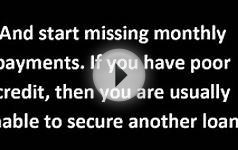 Paying for college is a hurdle so many young Americans and their families now face. The hunt for funds can become all the more stressful if parents and students have bad credit or no credit history at all.
Paying for college is a hurdle so many young Americans and their families now face. The hunt for funds can become all the more stressful if parents and students have bad credit or no credit history at all.
If you have bad credit, there are still several ways to get a student loan. In fact, your financial aid options may barely change, if at all. Scholarships, federal loans and grants, and borrowing from private lenders are all valid choices for getting a student loan.
Student Loan Options with Bad Credit
The federal government offers some loans to students regardless of their credit scores. Apply for federal financial aid by completing the FAFSA, the Free Application for Federal Student Aid. The results will tell you if you qualify for Stafford and Perkins loans, which do not require credit checks, as well as other federally funded student aid programs.
There is a “peer-to-peer” lending option. Students can turn to particular websites that link them with anonymous investors willing to offer loans. You may be able to work out better loan terms that suit your needs with a private investor. The people offering the loans are doing so to help out students in need. Be aware that this type of a loan can be risky, as it is not as secure as a loan from the government or a widely known bank.
Students can also look into their own contacts to ask for a loan. Friends and family members in better financial positions might be able to provide you with a loan from their own resources. The terms can be more flexible, and the lender will usually be willing to work with you because he or she knows you. Even in these cases, however, be sure to write up a contract detailing the agreement.






